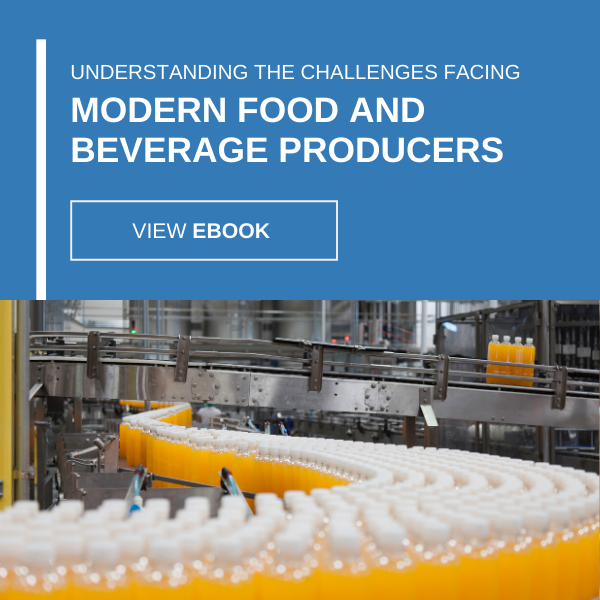
3 Evaluation Strategies for PE Firms Targeting Food and Beverage Acquisitions
What a time to be a private equity fund manager. According to Preqin, worldwide private equity holdings in 2016 reached a value of nearly $2.5 trillion. Private Equity liquid assets increased by $65 billion between 2015 and 2016.
Nestled amid that growth lies food and beverage, historically one of the more dependable performers in the PE portfolio. Investment banking and wealth management firm William Blair predicted that the number of M&A transactions in food manufacturing in 2017 broke records, toppling all other yearly totals in the past decade.
With that said, food and beverage acquisitions in the U.S. aren’t always the slam dunks they appear to be. When considering any acquisition, firms should always take the proper general precautions as well as those specific to the industry they’re targeting. What factors should PEs consider when deciding whether to invest in a food and beverage company?
1. Labeling regulations and court decisions
Class-action lawsuits involving food labels have rocked the food and beverage industry of late, and how appellate courts respond to this tumult might ultimately dictate how PE firms settle on their best bets for a profitable acquisition.
A recent report from the Institute for Legal Reform found that a few instances of possible misleading labels made up a majority of the litigation:
- Claims of “natural,” “preservative free” ingredients.
- Claims of “handmade” products or products “made in the U.S.” that aren’t.
- Fruit and beverage imagery on packaging to allegedly purport health.
- Slack fill packaging that includes extra space to protect contents but also bloats its appearance.
Any PE firm investigating a possible acquisition should examine any possibility that its targets will suffer from lawsuits, or that upcoming regulatory changes from the Food and Drug Administration will force its prospective holdings – and by default, the firm – to spend on shifting compliance. This includes a review of current and future packaging, labeling processes, sourcing relationships, etc., as well as location. The aforementioned study revealed that three-quarters of labeling-related federal litigation occurred in California, New York, Florida or Illinois. Another 10 percent occurred in Missouri, New Jersey and Pennsylvania.
2. Specialty food opportunities
These days, the size of an F&B business is not as important as growth opportunities within an industry niche. Big companies with nothing new to offer will not see as much favor as smaller companies with new products to offer the market or new value-adds that resonate with consumers.
But a new flavor that draws in a once untargeted demographic or an attractive superfood ingredient isn’t nearly as important as evidence of sustainability – in both production and demand. Is this change a long-term value or a flash in the pan? Does the company have the bandwidth to meet capacity increases? Are sourcing relationships for new products as beneficial as they could be? Answers to these questions and more will demonstrate whether a company has what it takes to earn your acquisition and subsequent investment.
3. Plans for direct-to-consumer model
Amazon’s acquisition of Whole Foods sent a message to food and beverage manufacturers and retailers alike: There’s no ignoring the disruption caused by the direct-to-consumer model.
Consumer packaged goods producers on the table for acquisition have likely spent the past few years in a defensive cost-cutting posture, hoping to reduce opex without compromising on quality and mild operational expansion. This may be the reason why PEs are eyeing these businesses to begin with.
Amazon/Whole Foods, however, represents an industrywide challenge of sorts. CPG companies, acquired or not, must formulate solid plans for evolving their products based on this market movement. Should they have these plans in place upon a visit from a hungry PE firm, that firm must weigh the quality of that strategy as a considerable part of their internal valuation. Put another way: If the food and beverage company has little to no plan for facing the Uberification of groceries, PEs must take note. It’ll mean passing on the venture entirely or expending resources to develop a strategy once the company is acquired.
Packaging is one such determinant. Innovation-minded food and beverage manufacturers are less inclined to worry about shelf appeal and more inclined to consider meal kits, cost-effective packaging designs built for shipping and perhaps even a change in portion sizes. These businesses, however, must support these plans with evidence of progress to win the attention of PE firms.
Of course, no acquisition is a sure thing. After all, PE firms specialize in transforming underperforming businesses. But if your organization has struggled with turning around an asset in your portfolio, contact USC Consulting Group today. Our operations management team will help you create a system for immediate and continuous improvement based on years of industry knowledge.





